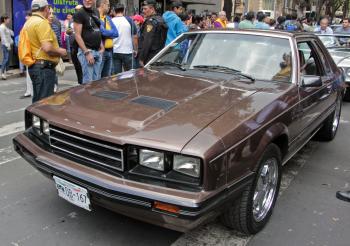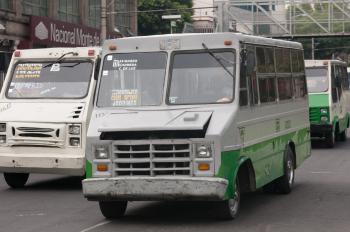Getting Around Mexico City
Getting Around Mexico City
All City Transport Options: What Locals Use and What’s Best for Tourists
General Overview
My first time using Mexico City's metro was a bit of an adventure, to say the least. I had read that it’s one of the largest and most efficient transportation systems in the world, so I was all in. But stepping into the bustling atmosphere of a station like Tacubaya during rush hour was overwhelming.You'll find that the metro runs from around 5 AM to midnight, which is pretty handy for early birds and night owls alike. The main options for public transport include the metro, which is super speedy, the RTP buses that are quite reliable, and of course, the famous metrobus—think of it as the bus with its own lane to avoid traffic. A single ride on the metro costs only $5 MXN, which is a steal compared to taxis, especially when you consider that ridesharing services can easily run you $100 MXN or more for a similar distance.
Oh, before I forget, a common tourist mistake is expecting the metro to be as luxury as in some cities. Yeah, it’s affordable, but it can get packed! While the cars are often clean, during peak hours (think 8-9 AM and 6-8 PM), you might find yourself crammed shoulder to shoulder with your fellow commuters, which can feel a bit claustrophobic. I once ended up too close for comfort to a guy who insisted on singing at the top of his lungs—it was certainly entertaining, but not what I signed up for!
A little local hack: if you’re looking to save on transport, consider getting the metro card (Tarjeta de Movilidad Integrada). It costs about $15 MXN initially, and then each ride will still cost you just $5 MXN, but as you load more money onto it, you can manage your trips better without fumbling with cash.
One of my sudden surprises was riding the metro and suddenly finding myself in the heart of Chapultepec—a perfect place to explore after your journey. Just take Line 1 to Chapultepec station, and boom, you’re at one of the largest city parks in the world.
Safety tip: Always keep your belongings close and be cautious during late-night travel. Though the metro is generally safe, it’s better to stay alert, especially if you are alone.
So, for anyone planning to get around in Mexico City, remember to embrace the chaos—it’s all part of the experience! And if you're thinking of heading to Coyoacán, take the metro to Pino Suárez and switch to the bus; it's a neat combination to see the sights while on the move.
Types of Transport
popular with tourists
The metro in Mexico City is one of the largest and most efficient in the world, boasting 12 lines that connect key areas such as the historic center, Chapultepec Park, and neighborhoods like Coyoacán. A single ticket costs just 5 pesos (approximately 0.25 USD), and you can purchase tickets at kiosks or vending machines in any station; pay attention to the clear instructions in English available at these machines. For tourists, an important tip is to avoid peak hours, typically from 7-9 AM and 5-8 PM, as trains can become extremely crowded, making travel uncomfortable. Always keep an eye on your belongings, especially in busy stations, and be aware of your surroundings while traveling. Finally, using a metro map (available at stations) can be a big time-saver; plan your route ahead, and don’t hesitate to ask station staff for help if needed—they're usually friendly and willing to assist.
popular with tourists
The trolleybus in Mexico City is an eco-friendly and efficient mode of transportation, covering key areas such as the historic center, Polanco, and the metropolitan zone. To use the trolleybus, you’ll need a "Tarjeta de Movilidad Integrada" which costs around 15 MXN, and you can load it with credit for each trip; a single ride costs about 6 MXN. A great tip for tourists is to familiarize yourself with the key trolleybus lines, like Line 1 that runs from Indios Verdes to Tacubaya, making it easy to visit popular attractions like Chapultepec Park. For time-saving, aim to travel during off-peak hours to avoid crowds; weekday mornings and late evenings are usually busier. Always be mindful of your belongings, especially during peak hours, to ensure a safe experience while navigating the system.
popular with tourists
Taxis in Mexico City are widely available and convenient, making them a great choice for getting around the city, especially when visiting popular tourist areas like Polanco, Coyoacán, and the Historic Center. The typical fare for a short ride within the city is around 70-150 pesos, but always confirm the price in advance if using a street taxi, as they often lack meters. It's highly recommended to use authorized taxi services, such as those hailed from dedicated taxi stands or booked via reputable apps like Uber or Didi for added safety.
If you're venturing out at night, stick to app-based rides or call a trusted taxi service, and make sure to keep your belongings secure, as theft can occur. For time-saving, avoid peak hours (7-10 AM and 5-8 PM) when traffic can be incredibly slow, and familiarize yourself with basic directions to your destination, so you can better communicate with the driver if needed.
If you're venturing out at night, stick to app-based rides or call a trusted taxi service, and make sure to keep your belongings secure, as theft can occur. For time-saving, avoid peak hours (7-10 AM and 5-8 PM) when traffic can be incredibly slow, and familiarize yourself with basic directions to your destination, so you can better communicate with the driver if needed.

The auto infrastructure in Mexico City is extensive, with well-maintained highways and major roads connecting all parts of the city, including popular tourist areas like Polanco, Condesa, and Chapultepec. To use a car, you can rent one from various agencies; prices generally range from $30 to $70 per day depending on the vehicle, and it's advisable to book in advance through reputable platforms that accept credit cards for payment. A key tip for tourists is to familiarize yourself with the “Hoy No Circula” program, which restricts driving on certain days based on license plate numbers, making it crucial to plan your driving days accordingly. Keep in mind that traffic can be heavy, particularly during rush hours (7 AM to 10 AM and 6 PM to 9 PM), so using navigation apps like Waze can help identify the fastest routes and avoid bottlenecks. Lastly, always park in well-lit, secure areas and ensure your windows are closed and valuables hidden to enhance safety while driving in Mexico City.

The bus system in Mexico City is extensive and covers all major areas, making it a convenient option for tourists to navigate the city. A single trip costs approximately 11 pesos, and it is essential to pay with a prepaid "Tarjeta de Movilidad Integrada," which you can purchase at metro stations or via convenience stores. For tourists, it's recommended to use the Metrobus, which is a dedicated bus rapid transit system that not only has a simpler boarding process but also operates on less congested lanes—ideal routes include Line 1 (Indios Verdes to Pantitlán) for key attractions like Alameda Central and La Roma. To save time, plan your route in advance using apps like Google Maps, as they provide real-time updates on bus schedules and transfers. Finally, keep personal belongings secure and stay aware of your surroundings, especially during peak hours when buses can be crowded.
Here you can learn about all types of transport in Mexico City. What transport is available, how to reach tourist attractions and which mode of transport is optimal.



